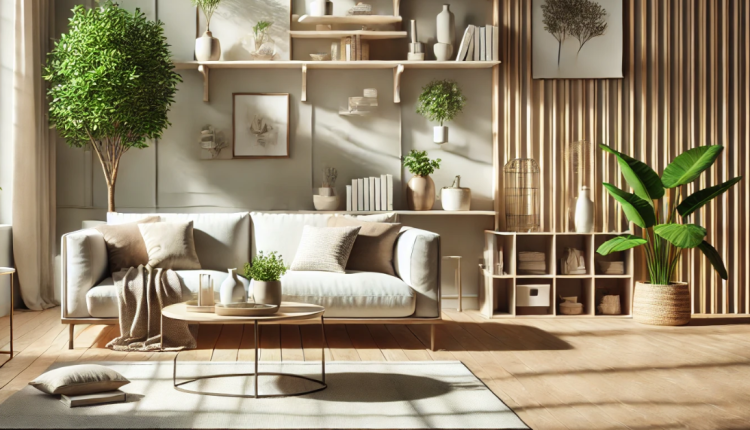The Art of Decluttering: Transforming Your Home into a Serene Sanctuary
In today’s fast-paced world, our homes should serve as sanctuaries—a place to unwind, recharge, and find peace. However, clutter can disrupt this harmony, leading to increased stress and decreased productivity. Embracing the art of decluttering not only enhances the aesthetic appeal of your living space but also promotes mental well-being. This comprehensive guide delves into effective decluttering strategies to help you transform your home into a serene haven.
Understanding the Impact of Clutter
Clutter is more than just a physical accumulation of items; it can have profound psychological effects. Studies have shown that cluttered environments can lead to feelings of anxiety, overwhelm, and even depression. The visual chaos created by excess belongings can overstimulate our senses, making it challenging to relax and focus. By addressing clutter, we pave the way for a more tranquil and organized life.
The Benefits of Decluttering
Before embarking on the decluttering journey, it’s essential to recognize the myriad benefits it offers:
- Enhanced Mental Clarity: A tidy space reduces distractions, allowing for improved concentration and decision-making.
- Reduced Stress Levels: An organized environment fosters a sense of control and calm, mitigating feelings of stress.
- Increased Productivity: With fewer distractions, you can focus better on tasks, leading to heightened efficiency.
- Improved Aesthetics: A clutter-free home is visually appealing, creating a welcoming atmosphere for residents and guests alike.
- Simplified Cleaning: Fewer items mean less surface area to clean, making routine maintenance more manageable.
Step-by-Step Decluttering Process
Embarking on a decluttering mission can seem daunting, but breaking it down into manageable steps can simplify the process:
1. Set Clear Objectives
Define what you aim to achieve through decluttering. Whether it’s creating more living space, reducing stress, or preparing for a move, having clear goals will guide your efforts.
2. Start Small
Begin with a single room or even a specific area within a room. Tackling smaller sections prevents overwhelm and provides a sense of accomplishment that motivates further action.
3. Categorize Your Belongings
Sort items into categories: Keep, Donate, Sell, and Discard. This methodical approach ensures that each item is evaluated based on its utility and sentimental value.
4. Evaluate Necessity
Ask yourself if each item serves a purpose or brings joy. If it hasn’t been used or appreciated in the past year, it might be time to let it go.
5. Organize Thoughtfully
For the items you choose to keep, designate specific storage spaces. Utilize storage solutions like bins, shelves, and dividers to maintain order and accessibility.
6. Dispose Responsibly
Donate usable items to charities, sell valuable pieces online or through garage sales, and recycle or responsibly dispose of items that are no longer functional.
Maintaining a Clutter-Free Environment
Decluttering is not a one-time task but an ongoing commitment. Implement these strategies to maintain an organized home:
- Adopt the One-In-One-Out Rule: For every new item brought into the home, remove an existing one to prevent accumulation.
- Regularly Assess Belongings: Periodically review your possessions to identify items that no longer serve a purpose.
- Create Daily Tidying Habits: Allocate a few minutes each day to put things back in their designated places.
- Be Mindful of Purchases: Before acquiring new items, consider their necessity and the space available.
Overcoming Common Decluttering Challenges
It’s natural to encounter obstacles during the decluttering process. Here’s how to address common challenges:
- Sentimental Attachments: While it’s important to honor memories, retaining every sentimental item can lead to clutter. Select a few meaningful pieces to keep and consider digitizing photos or documents to save space.
- Fear of Future Need: Holding onto items “just in case” can result in unnecessary accumulation. Trust that you can access or replace items if the need arises in the future.
- Guilt Over Waste: Feeling guilty about discarding items, especially if they were expensive, is common. Remember that the money has already been spent, and holding onto unused items doesn’t recoup the cost. Donating can alleviate guilt by knowing the items will benefit others.
The Psychological Rewards of Decluttering
Beyond the physical transformation, decluttering offers significant psychological benefits:
- Empowerment: Taking control of your environment fosters a sense of empowerment and autonomy.
- Emotional Release: Letting go of unnecessary items can be cathartic, helping to release past burdens and make room for new experiences.
- Enhanced Well-being: A serene, organized space contributes to overall happiness and well-being, providing a sanctuary from external stresses.
Conclusion
Decluttering is a transformative practice that extends beyond mere organization. It is an investment in your mental health, productivity, and overall quality of life. By systematically evaluating your possessions and mindfully curating your living space, you can create a harmonious environment that truly serves as a sanctuary. Embrace the art of decluttering and experience the profound benefits of a simplified, serene home.

